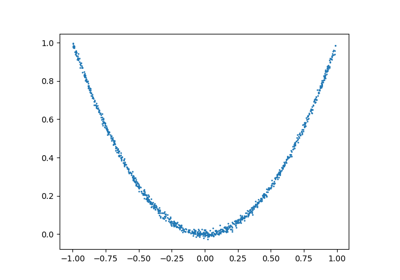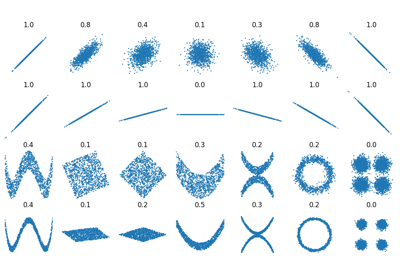distance_correlation#
- distance_correlation(x, y, *, exponent=1, method=DistanceCovarianceMethod.AUTO, compile_mode=CompileMode.AUTO)[source]#
Usual (biased) estimator for the distance correlation.
- Parameters
x (Array) – First random vector. The columns correspond with the individual random variables while the rows are individual instances of the random vector.
y (Array) – Second random vector. The columns correspond with the individual random variables while the rows are individual instances of the random vector.
exponent (float) – Exponent of the Euclidean distance, in the range \((0, 2)\). Equivalently, it is twice the Hurst parameter of fractional Brownian motion.
method (Union[DistanceCovarianceMethod, Literal['auto', 'naive', 'avl', 'mergesort']]) – Method to use internally to compute the distance covariance.
compile_mode (CompileMode) – Compilation mode used. By default it tries to use the fastest available type of compilation.
- Returns
Value of the biased estimator of the distance correlation.
- Return type
Array
See also
distance_correlation_sqr u_distance_correlation_sqr
Examples
>>> import numpy as np >>> import dcor >>> a = np.array([[1., 2., 3., 4.], ... [5., 6., 7., 8.], ... [9., 10., 11., 12.], ... [13., 14., 15., 16.]]) >>> b = np.array([[1.], [0.], [0.], [1.]]) >>> dcor.distance_correlation(a, a) 1.0 >>> dcor.distance_correlation(a, b) 0.5266403... >>> dcor.distance_correlation(b, b) 1.0 >>> dcor.distance_correlation(a, b, exponent=0.5) 0.6703214...

